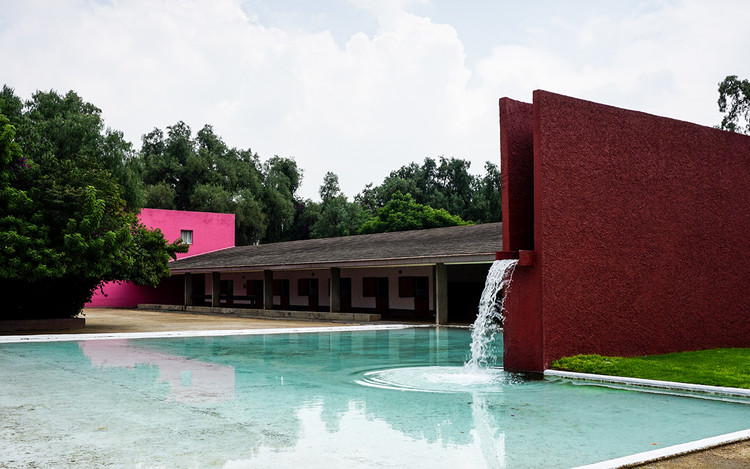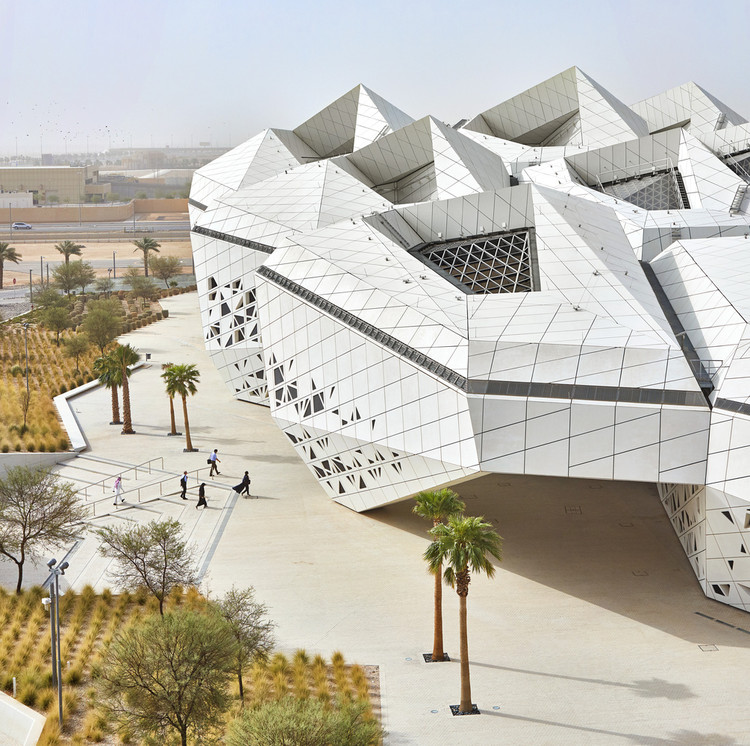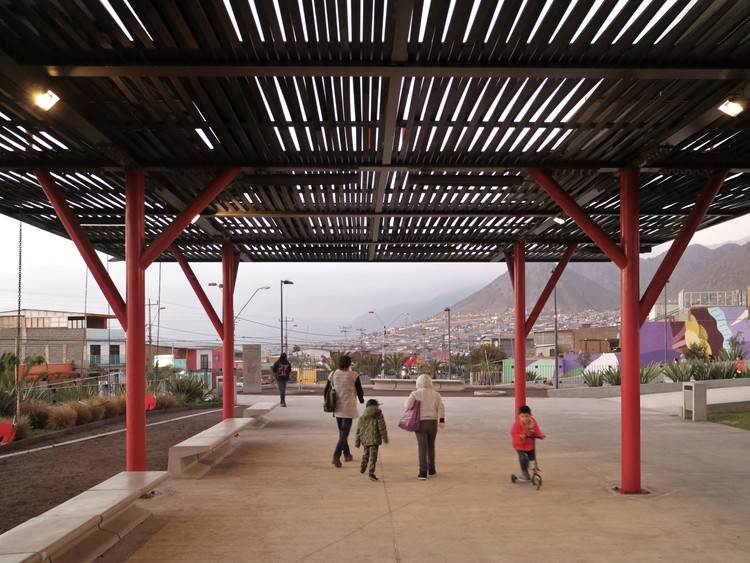
Creating a model for rendering does have its own set of rules. To get you up and rendering as quickly as possible, here are SketchUp's top five tips for prepping your SketchUp model for rendering.


Creating a model for rendering does have its own set of rules. To get you up and rendering as quickly as possible, here are SketchUp's top five tips for prepping your SketchUp model for rendering.

In a year packed with headlines, you’d be forgiven for occasionally letting them pass you by. But even within the mass of project proposals, awards, competitions, and events, a few trends emerged in 2018 - trends that both tell us about the year past and suggest where things might be heading. These trends, below:

Oxford-born designer, Jay Osgerby has achieved virtually everything there is to achieve in the world of design. Together with his partner Edward Barber, Osgerby runs the internationally renowned Barber & Osgerby design studio. From diverse designs for well-known manufacturers such as Vitra and B&B Italia to the official torch for the 2012 Olympic Games in London and a two-pound coin commemorating the 150th anniversary of the London Underground, Osgerby and his partner have been almost restless in their creation of numerous icons. “I find it quite difficult to not think about work. I’m always thinking about what’s next. I’m terrible at stopping and just thinking.”

With the right configuration of materials and shapes, small enclosure, such as bathrooms, have unending design potential. Progressively, architects and designers are striving to make washrooms more welcoming and attractive places for its users. Often times we will hear clients ask for their bathroom to be somewhat of a personal spa. This week we have compiled 10 compelling images of bathrooms from all over the world. Bathrooms whose materials, patterns, colors, shapes, and textures begin to tell a story. Below, photographs by Peter Clarke, José Hevia, and Erieta Attali.

Dealing with the context of a project’s site is an essential part of architecture, be it by denying or incorporating preexisting elements and the environment’s conditions in the design. However, understanding what lies around as an active agent of the decisions and space organization goes beyond simply considering the good views, natural ventilation, solar orientation, etc; it is about seeing these conditions as co-authors.
These cases are most notable when practices think of the architecture's surrounding environment as an active agent.

Can tablets help architects better conceive and execute their designs? If you’re skeptical, you’re not alone. To a certain extent, architects are still unsure if meaningful work can be created on an iPad. As the novel of virtual reality wears off, it’s worth asking if portable augmented reality is the push forward that will combine the best of traditional and digital architectural technology. So beyond their utility as lightweight, untethered screens, what can tablets offer the professional architect?

Architects use meshes and nets as a way to brighten up homes, hostels, and even office spaces. Functioning as a hammock, mesh establish a connection between floor levels. This playful feature often creates unexpected places for leisure, escape, and rest. Below, we've selected 17 projects that feature nets and meshes.

This article was originally published on CommonEdge as "When Buildings Are Shaped More by Code than by Architects."
Architects are often driven by forces which are stronger than aesthetics or even client whims and desires. To some extent we’re captive to the tools and materials we use, and the legal limitations placed on us as architects. Today a new code definition has changed one type of building in all of the ways architects usually control.

“A drawing should be a key to the understanding of architecture – what is there to like or dislike, where do architects’ ideas come from, how do these ideas make it to paper, and what is important in this process.” - Sergei Tchoban
For the past month the Russian-German architect, artist, and collector Sergei Tchoban has been the focus of the exhibition, Sergei Tchoban: Drawing Buildings/Building Drawings, bringing together fifty of the architect’s large-scale urban fantasy drawings. These drawings, while intriguing for their technical and artistic value, also reflect Tchoban's deeply personal contemplations about the past, present, and future of his favorite cities - Saint Petersburg, Rome, Amsterdam, Venice, Berlin, New York – along with in-depth documentation of five realized projects (two museums, two exhibition pavilions, and a theater stage design.)

The holiday season may be one of joy, but there's always a little panic involved as well. You want to treat your loved ones to a gift they'll treasure and appreciate, but where to start?
Readers, ArchDaily has you covered. This year we've separated our choices in sections to help you find that perfect gift for the picky (budding) architect in your life. Our choices - and links to where you can find them - after the break:

This article was originally published by Autodesk's Redshift publication.
In East London, The Trampery on the Gantry is doubling down on the “creative” aspect of creative reuse. Part of the massive broadcast center used during the 2012 Olympic Games, the former HVAC gantry structure has been retrofitted by architecture firm Hawkins\Brown as an arts and media innovation hub.

Slate is a mineral product, completely inert and ecological, with a simple and efficient production process. It is one of the most versatile natural products, adapting to any project as a coating material, from roof to floor and façade.
It is resistant to extreme temperatures, with a lifespan of 100 years and a high impermeability, slate guarantees a reliable performance in any climatic condition. Its diversity in shapes, sizes, and textures allow for a multiplicity of combinations inviting architects to awaken their creative side.
We've compiled a list of 7 exemplary homes that have used slate as a wrapping material.

As a follow up to A Glimpse Into the Weird World of Architecture Students' First Assignments I wanted to explore what architecture schools from around the world are looking for in creating their institution’s community of young architects.
Approximately 3,550 students enroll annually in the United States into an accredited Bachelor of Architecture (BArch) program according to the National Architectural Accrediting Board (NAAB) and about 70% of that enrollment eventually graduate with a degree in architecture. There are 51 Accredited BArch programs in the United States compared to over 2,000 architecture programs worldwide. The United States has such a minimum amount of architecture schools relative to the world. An interesting fact is there are twice as many Master of Architecture programs in the U.S., but the initial quantity of student enrollment into each program is very similar.

On November 22, 1988, one of the most important and revered figures in the history of Mexican and international architecture died in Mexico City. Luis Barragán Morfín, born in Guadalajara and trained as a civil engineer left behind an extensive legacy of published works, conferences, buildings, houses, and gardens that remain relevant to this day. While Barragán was known for his far-reaching research in customs and traditions, above all, the architect spent his life in contemplation. His sensitivity to the world and continued effort to rewrite the mundane has made him a lasting figure in Mexico, and the world.
Undoubtedly, Luis Barragán's legacy represents something so complex and timeless that it continues to inspire and surprise architects across generations. It is because of this that, 30 years after his death, we've compiled this series of testimonies from some of Mexico's most prominent contemporary architects, allowing them to reflect on their favorites of Barragan's works and share just how his work has impacted and inspired theirs.

Urban Sketchers is an international non-profit organization dedicated to fostering a global community of artists who practice on-site drawings to enhance the artistic, narrative, and educational value of drawing. Connecting people from all over the world, the organization brings people in touch with their environment to illustrate drawings of their lived experiences.

This extract was originally published on Common Edge as "The Legacy of Christopher Alexander: Criteria for an Intelligent Architecture."
In his monumental four-volume book, The Nature of Order, Christopher Alexander talks about an intelligent architecture, responsive to human needs and sensibilities through adaptation to existing buildings and nature. This is a new way of viewing the world—a way of connecting to it, and to ourselves—yet it is very much the same as the most ancient ways of connecting.

London architecture today, for all the big-hitters that dominate the headlines (Foster, Rogers, Heatherwick), finds its richness in small studios. Peter Barber leads one such studio, where for the past 30 years he has led the development of some of the city’s most sensitive housing and housing developments.

Throughout history, markets have provided an important function in the exchange of foods, books, spices, everyday items, and even ideas. From Mexican Tianguis to North African Souks, they played an essential element in the configuration of urban spaces.
Different architects have approached this challenge, where spatial distribution plays a fundamental role in creating adequate logistics and circulation.
We've selected 20 markets and their plan and section to inspire your next project.

On a small strip of land between the Emscher River and the Rhine Herne Canal in Germany sits a rest stop whose colorful appearance belies its radical purpose. The structure’s artful design consists of pipes leading from two toilets and the Emscher (the most polluted river in Germany) that converge at a small community garden and drinking fountain. The garden is, in fact, a manmade wetland that collects, treats, and cleans the effluence from the toilets and river—making it drinkable.

This article was originally published by Autodesk's Redshift publication as "Respect: Architect Zaha Hadid, Queen of the Curve."
In March 2016, when world-renowned architect Zaha Hadid died of a heart attack at age 65 in a Miami hospital, the news sent shockwaves through the architecture community.
The flamboyant British designer—born on October 31, 1950 in Iraq, educated in Beirut, and known as the “Queen of the Curve” for her swooping, elegantly complex designs—was a legend in her time. She had design commissions around the world, been awarded the Pritzker Prize in 2004 and the Royal Institute of British Architects’ gold medal in 2016, and transcended the old-guard strictures of a staunchly male-dominated profession.

Architectural visualization has been around for centuries, with drawings and paintings depicting finished structures before they were built. In the 1990s, the movement of the industry from paper to CAD saw video added to the mix, with the new ability to produce walk-throughs and fly-throughs from design.
It was only a matter of time before architectural visualization professionals discovered real-time rendering, which can produce finished videos in a fraction of the time of traditional rendering processes. Initially intended for game development, real-time render engines have now reached a level of quality and photorealism that makes them ideal for presenting architectural designs.
With real-time rendering comes an unexpected bonus: new types of presentations for clients. Architectural visualization can now include immersive experiences like virtual reality tours, interactive, game-like projects, and cave automatic virtual environments (CAVEs) to present design in ways never seen before.

Alvaro Siza orchestrates, like no other, the experience of the visitor in his works. By means of compressions and decompression, openings and closings, volumes, voids and light, the Portuguese architect marks the paths, points of view, and perspective of the passage of time. In this photo essay, Ronaldo Azambuja photographed the Iberê Camargo Foundation ten years after its inauguration.

Using coiled wire fabric to divide interior spaces allows for both open and non-invasive partitioned areas. The installations add texture but maintain a soft, semi-opaque appearance. These functional room dividers are composed of coiled wire fabric woven into different thicknesses, which provide a flexible design and moldability.
Today we will highlight its use as an operable room divider, but coiled wire fabric can also be used as a ceiling treatment, exhibit and retail displays, wall coverings, artistic elements, and much more.

Since the end of World War II, Russia’s cities have grown in a Modern Soviet style. This prolonged use and application of the principles of architecture’s modern movement heavily affected the country’s development and urban expansion. But now, the new generations of architecture professionals are seeking to make a change.

Architecture is powerful, and like nuclear energy, it all depends on how it is used. While it can create uninhabitable municipalities, it can also create safer cities that improve quality of life.
In various examples, urban design has provided a response to deteriorated or abandoned public spaces. It has shown that distribution and lighting are essential, but that it is also necessary to consider who will be using the space and how to make it an environment that generates community.